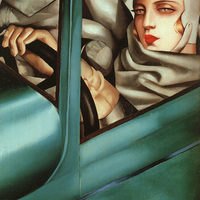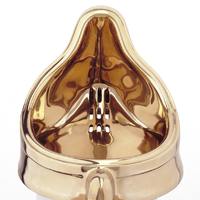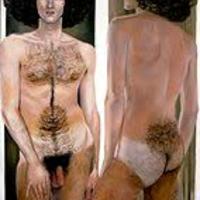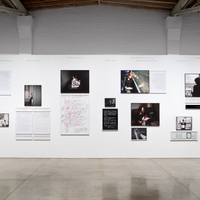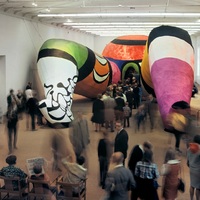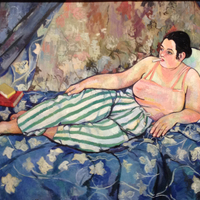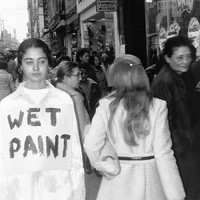Gallery
Women were often in the past put into a box and stressed to be only one type a woman; a mother who provides children, cleans, cooks and stays quiet. These women go against the grain by becoming their own type of woman. My Portrait by Tamara De Lempicka gives herself a position in the artwork by putting "My" in the title, she identifies herself amongst the audience to show that she has importance.
Fountain by Sherrie Levine took a different direction than many artists by recreating works of other artists. She recreated the artworks in her own concept. Artists would take inspiration from artworks and small details would represent those inspiration in their final artwork, but Levine full replicated artworks with a small twist.
Slyvia Sleigh's painting of Paul Rosano shows how extraordinary she was by putting his name in the artwork title. Models, especially female models rarely had their name in the title of a painting. Levine paints Rosano in his natural form; not disfiguring him to be perfect and stretching his body in uncomfortable positions. This painting relates to Tamara De Lempicka's painting, My Portrait, both titles are announcing the person in the painting and giving credit to them rather than leaving them as an object.
Take Care of Yourself by Sophie Calle is a moving exhibition. She asked other women to read the letter that was sent to her, because the last sentence said to "Take care of yourself" and that is exactly what she did. She went to other women for help and then displayed her personal life to the public. She voluntary shows the emotions that she had and the reactions of other women. This goes back to women being thier own type of woman. Each woman that read the letter had their own response because they are all not the same and cannot be put into a box.
Frida Kahlo's was an emotional painter who was advent on displaying her pain, emotions and life through art. She brought up the little talked subject of miscarriage and abortion through her Henry Ford Hospital painting. There are many symbolic objects that represent the miscarriage and shows the honesty of what a woman goes through in the hospital. Frida showed brought up the topic of how not all women want to have kids or are married and don't have kids. She pushed the mind of future artists and society's mindset.
Niki Saint Phalle's, Hon; a powerful sculpture. She was the leader of this masterpiece and lead other male artists to help build this exhibition. Hon shows the power of woman and how no one would be here without being birthed from a woman. She pushed to societal view of feminism, which she discusses further in her interview (Documents page). Feminism isn't delicate, but can be strong and the center of humanity.
The Blue Room by Valadon portrays a woman, but puts a different perspective on it than the usual norm. Suzanne takes the nude model concept and transforms it into the opposite by clothing the woman on the bed. She takes away the ideals that society expects in a painting; nude, unclothed, and feminine. Valadon shows a woman who isn't interested in the audience. This was another step for women and society, to take a different perspective toward woman as beings--not objects. This artwork relates back to Frida Kahlo's in how they both are trying to show a different perspective to society that isn't seen much.
Adrian Piper tackles race, identity and gender in all art forms. In Catalysis III, she publicly shows her work and challenges the public straight on. Adrian went out in public to evoke society to look at her and see what she was presenting; a literal message. Adrian is known for her strong, raw and grueling messages that she displays in public. She mainly wanted people to react and to start thinking.
These women are portraying a different message and pushing societal views in each artwork.
